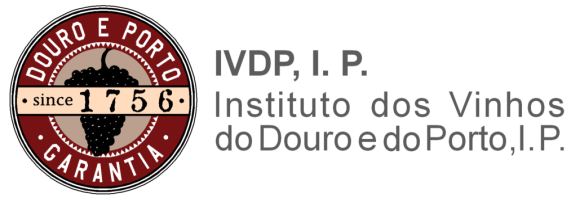Porto e Douro | 波尔图及杜罗河

![]()
Porto
The same region that produces Douro wines also produces Port Wine, a unique and original sweet fortified wine on the world stage.
Today, the area is much larger that when it was first established and stretches to the natural border with Spain, which is also bounded by the Douro river. The region is one and the same, and so are the varieties, with small variations: Port wine uses rather more Tinta Barroca than wines for general use, while Tinta Amarela is almost absent from Port wine.
The production of Port Wine requires brandy, used in fermentation and to retain some residual sugar. Thus, Port wine is always sweet, except the Branco Seco variety, where the brandy is only added at the end of the fermentation process. The final result is as follows: each 550-litre barrel of Port wine has on average, 115 litres of brandy to 435 litres of grape juice. The brandy must be from wine – but completely neutral and subject to tight official control -, the 77th of volume does not have to be produced in the region, or even in Portugal.
Port wine includes two large families of wines: those that develop and age in the bottle and those that develop in the barrel.
Thus, Ruby Port – red and young – and Tawny Port – golden to brown in colour, as a result of ageing in wood – are produced. The first family includes Ruby, Ruby Reserve, LBV (Late Bottled Vintage) and Vintage; the second group includes Tawny, Tawny Reserve, Tawnies with an age indication – 10, 20, 30 and Over 40 years – and Harvests. In order to make these older wines, which are always batches of wines of different ages, companies resort to their stock of wines that have aged for a long time in the barrel, stock that for a large company is numbered in thousands of barrels, each of 550 litres.
In the case of Vintage and LBV Ports, these are wines from a single harvest, and the year must be printed on the label; in the the case of Vintage wines, these are only declared as such in years that are considered exceptional. This is a wine that develops in the bottle and should last many decades. All wines carry the approval of the IVDPs Wine Tasters Council, which grants the guarantee seals; without these, no wine may be sold as Port Wine.
This quality control process is a line of defense for consumers, who can be assured that they are drinking a wine that has been certified by an independent Wine Tasters’ Council.
Douro
The Douro region – whose landscape was considered a World Heritage Site by UNESCO – extends along a large area, with the Douro River as its central axis. Altogether, there are 250,000 hectares of uncultivated land, marked by poor soils where schist is the main feature in the landscape and the climate is dry and Mediterranean.
Along the banks of the river, vines are grown on terraces, where is produced either wine for consumption – Douro – either Port Wine wine. As an old region that is – demarcated in 1756 -, the Douro includes in its record over 100 grape varieties, some of them out of use but still present in some old vineyards and currently being rediscovered by several producers.
Currently, there is a preference on the part of producers for a batch of red wine grapes that includes Touriga Nacional, Tinta Roriz, Touriga Branca, Tinta Barroca, Tinto Cão, Tinta Amarela and, less markedly, Sousão, among many others.
Among the white wine grapes, preference lies with the national varieties and the vineyards are dominated by Viosinho, Gouveio, Rabigato, Codega and Malvasia and Moscatel, that latter being widely used in producing a sweet wine in the region of Favaios.
The Douro has an advantage over other Portuguese regions in that it still has many old vineyards with mixed varieties of grapes, which are then pressed together in stone presses. So, as tradition dictated, the batch was made up in the vineyard and not in the winery, which is no longer the case. Some of those old vines, which can give rise to great wines, are highly sought-after today by producers who aim for specialty wines in preference over large volumes.
The best areas for wine production can be found on high ground – 500 m to 600 m above sea-level – where the heat is less intense and more balanced grape juices are produced, with a better proportioned acidity, being for that reason, lands specially dedicated to the production of elegant whites and reds.
The region also produces sparkling wine that, while in small amounts, is very much enjoyed due to its good quality. The companies in the Port Wine sector have shown an increasing interest in wines for general consumption in recent years, and that has also helped increase the Douro’s international reputation as an area for producing great wines. Here, too, there is a growing production of whites and rosés and, even in a niche market, the white wines of late harvest.
![]()
波特酒
在生产杜罗河葡萄酒的产区,同时还酿造波特酒,一种世界上独一无二的加强葡萄酒。
今天这片产区的面积比第一次划定时大多了,一直延伸到也是由杜罗河划分的,与西班牙的自然边境线。这个产区与杜罗河葡萄酒产区是一个产区,葡萄品种也一样,但有些许小变化:与餐酒相比,在波特酒中更多使用白色巴罗卡葡萄;而且与餐酒相反,波特酒中并不使用黄红葡萄。
酿造波特酒时,需使用烧酒以阻止继续发酵,将残存的糖分保留下来。由于这种酿造方式,波特酒总是甜的;干白波特酒除外,因为干白波特酒是在发酵的最后阶段才加入烧酒的。最后得到结果是:我们拥有的每桶550升装波特酒中平均含115升烧酒,435升葡萄浆。烧酒必须由葡萄酿造(但必须完全是中性的,受到严格的官方控制),百分之七十七的烧酒不是本产区,甚至不是葡萄牙出产的。
波特酒中包含两大家族:在瓶中发展成熟的波特酒和其他在木酒桶中发展的波特酒。
这样就但是了红宝石色波特酒和茶色波特酒。前者是一种红色的年轻波特酒,而后者是一种呈金黄到发棕颜色,在木桶中长年陈化而得到的一款波特酒。前者包括红宝石色波特,红宝石色珍藏波特,晚装瓶波特和年份声明经典波特;后者包括茶色波特,珍藏茶色波特,标示10年、20年、30年和40年以上酒龄和采摘年份的茶色波特。对于这些陈年波特来说,酿造企业会求助于自已拥有的,在木酒桶中长时间陈化的葡萄酒库存,将不同酒龄的葡萄酒混合成一批酒;在大型企业中,这些存货是以数以千计的酒桶,每桶550升来计算的。
说到经典年份波特酒和晚装瓶波特酒,我们是在谈论那些仅使用一个采摘年份的葡萄酿造的波特酒,这个采摘年份必须在酒标上标出;而只有在特殊的年份才可以做出经典年份波特声明,它是一种在瓶中发展并且会持续几十年的波特酒。所有的波特酒都必须经过杜罗河葡萄酒及波特酒研究院品酒小组的品鉴,小组将颁发质保印票,没有这些印票,任何葡萄酒都不得作为波特酒销售。
这样的质量控制是为了保护消费者,让他们在饮用波特酒时,能够确切地知道自己饮用的酒是被独立的品鉴小组认证过的。
杜罗河产区
杜罗河产区的景观被联合国教科文组织认定为世界文化遗产。这个产区以杜罗河为中轴,分布在两岸的广大地区,总计二十五万公顷的广袤土地。这里的土地贫瘠,片岩的出现标志着这里的景色,气候干旱,有着地中海的剪影。
沿着杜罗河两岸遍布梯田葡萄园,这里既酿造餐酒——杜罗河葡萄酒,也酿造波特酒。作为一个早在1756就被划定的古老产区,杜罗河产区的记录中包括了一百多个品种的葡萄,其中的一些已经被淘汰了,但是依然出现古老的葡萄园中,现在变成了许多酿造商们重新发现的对象。
这里酿造商们偏好一种混酿酿造葡萄酒,里面使用了国产多丽嘉,红色罗丽斯,多丽嘉•弗兰卡,红色巴罗卡,红色卡昂,黄红葡萄,还有一点索赞葡萄等。
白色品种的葡萄,他们也是偏爱国产品种,占主导地位的是维沃西尼奥,戈维奥,拉比加多,科德加,玛尔瓦西亚和麝香葡萄,麝香葡萄在法瓦尤斯产区常用来酿造强化葡萄酒。
与葡萄牙其他产区相比,杜罗河产区拥有一个优势,就是还存有许多拥有混合品种的老葡萄园,这些葡萄在采摘后被放进石头酒槽中一起酿造。这样,就像传统要求的那样,这批葡萄酒是在葡萄园中,而不是在酒厂中酿造的。其中一些老葡萄园——那里可以酿造出伟大的葡萄酒,现在是许多酿造商的找寻目标,他们倾向于轻视数量而酿造有特色的葡萄酒。
酿造用于餐酒的最好区域在海拔500/600米较高的地方,这里的炎热不那么强烈,可以得到酸度成正比、更为平衡的葡萄浆。因此,这是专门用来酿造优雅的白葡萄酒和红葡萄酒的土地。
杜罗河产区也酿造起泡酒,虽然数量很小但是质量上乘,深受追捧。在近些年,波特酒企业对于餐酒的兴趣在增长,这有助于国际上承认杜罗河产区是酿造高品质葡萄酒的地区。这里也越来越多地生产白葡萄酒和桃红葡萄酒;此外,使用晚采摘葡萄酿造的白葡萄酒,不过这仅是在一个细分市场中。

